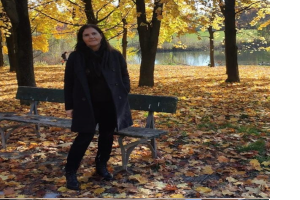In Europe, town twinning began to take shape as an organized phenomenon after the Second World War. For a short time, multiple twinning approaches were confronted, but already in 1951 the two organizations destined to represent the two most significant models, in mutual opposition, were founded.
 The Council of European Municipalities (CEM) was established in Geneva on the initiative of a group of European mayors and was also opened to the regions in 1984, becoming the Council of European Municipalities and Regions (CEMR/CCRE). During the war cold, the CEM aimed to promote European unity also in an anti-Soviet function, paying particular attention to relations between cities belonging to Western Europe.
The Council of European Municipalities (CEM) was established in Geneva on the initiative of a group of European mayors and was also opened to the regions in 1984, becoming the Council of European Municipalities and Regions (CEMR/CCRE). During the war cold, the CEM aimed to promote European unity also in an anti-Soviet function, paying particular attention to relations between cities belonging to Western Europe.
At the same time, the Le Monde Bilingue Association was founded, later known as the Fédération Mondiale des Villes Jumelées and from 1957 it became the Fédération Mondiale des Cities Unies (FMCU), in English United Towns Organization (UTO), with the intention of spreading the English and French as the main international languages, through the support offered to twinning communities in Western Europe.
The main purpose of twinning in the fifties was to lay the foundations for a stable and peaceful coexistence between European nations, in particular France and Germany, which in the period between the end of the world war and 1963, the year in which the two countries sign a treaty of friendship, 120 Franco-German twinnings were signed.
Even worldwide, the UN has encouraged twinning, considering them a valuable tool for promoting international cooperation and the development of the communities concerned, since 1964, the year of resolution 1028 (XXXVII) of the United Nations Economic and Social Council (ECOSOC) - Town Twinning: means of international co-operation.
Town twinning, conceived in Europe around 1950, represents the official stipulation of a union between two or more communities (provinces, metropolitan cities or municipalities), for the purpose of cooperating and collaborating in various sectors - such as politics, the economic, the commercial, the social, the educational, the cultural, etc. - and to establish lasting relationships over time.
By directly involving citizens, twinning fosters the process of European integration by promoting intercultural dialogue, the exchange of experiences, knowledge and values, the constructive comparison of opinions and mutual enrichment, thus contributing to the definition of the common European identity.
The direct relationships between the populations of different countries determine the mutual knowledge and progressive esteem of the people - single or united in associations - whose communities of origin, while moving towards shared objectives, are custodians of specific identities.
By exalting unity in diversity, twinning accelerates the process of overcoming any kind of prejudice; and they favor the acquisition of awareness of the common European values which contribute, with those of other civilizations, to the diffusion of solidarity on all continents and therefore to the affirmation of peace in the world.
Town twinning between cities in different countries can become a prerequisite for participation in Erasmus plus projects, whose general objective is to support, through lifelong learning, the educational, professional and personal development of individuals in the fields of education, training, youth and sport, in Europe and in the rest of the world, thus contributing way to sustainable growth, quality jobs and social cohesion, as well as promoting innovation and strengthening European identity and active citizenship.
The main objective is to promote the mobility of individuals and groups for learning purposes as well as collaboration, quality, inclusion and equity, excellence, creativity and innovation at the level of organizations and policies in the field of education and training. In particular, the opportunities for the school world in Erasmus+ aim to improve the quality and effectiveness of education, in order to allow all European citizens to acquire the fundamental skills defined by the Education and Training 2020 strategic framework.
All schools, nursery, primary and secondary, can participate in Erasmus+. Funds are available for pupil and staff mobility projects and transnational partnerships between schools and organisations. Whole classes or groups of students can visit partner schools, while individual students have the option to spend a longer period in a school from another country. The Program also includes collaborative distance learning activities within the European community of eTwinning teachers.
The twinning between the cities of Susa, in Piedmont, and Briancon, in Savoy, France, born more than seventy years ago, in 1952, represents a story of resilience and friendship between two communities that implement good practices of European citizenship thanks to the exchange project between the schools of the respective cities.
The collaboration between educational institutions of all levels allows students to approach other cultures, through direct contact during the entire school year, thanks to digital technologies but also to very traditional means of communication, such as letters, handwritten and sent by mail. The recent visit of the French students brought the pen pals together "live", with great satisfaction on the part of both nationalities.
Through projects of this type, since early childhood, the creation of the terrestrial citizenship that Edgar Morin has repeatedly hoped for is ensured, overcoming even, and above all, mental boundaries.
Transforming this twinning into an Erasmus+ project is the mission that school headteachers and municipal administrations have set themselves, with a view to continuing to implement the construction of the European identity of the peoples, in order to build a lasting partnership with the support of the European institutions.
Manuela Rivetti



